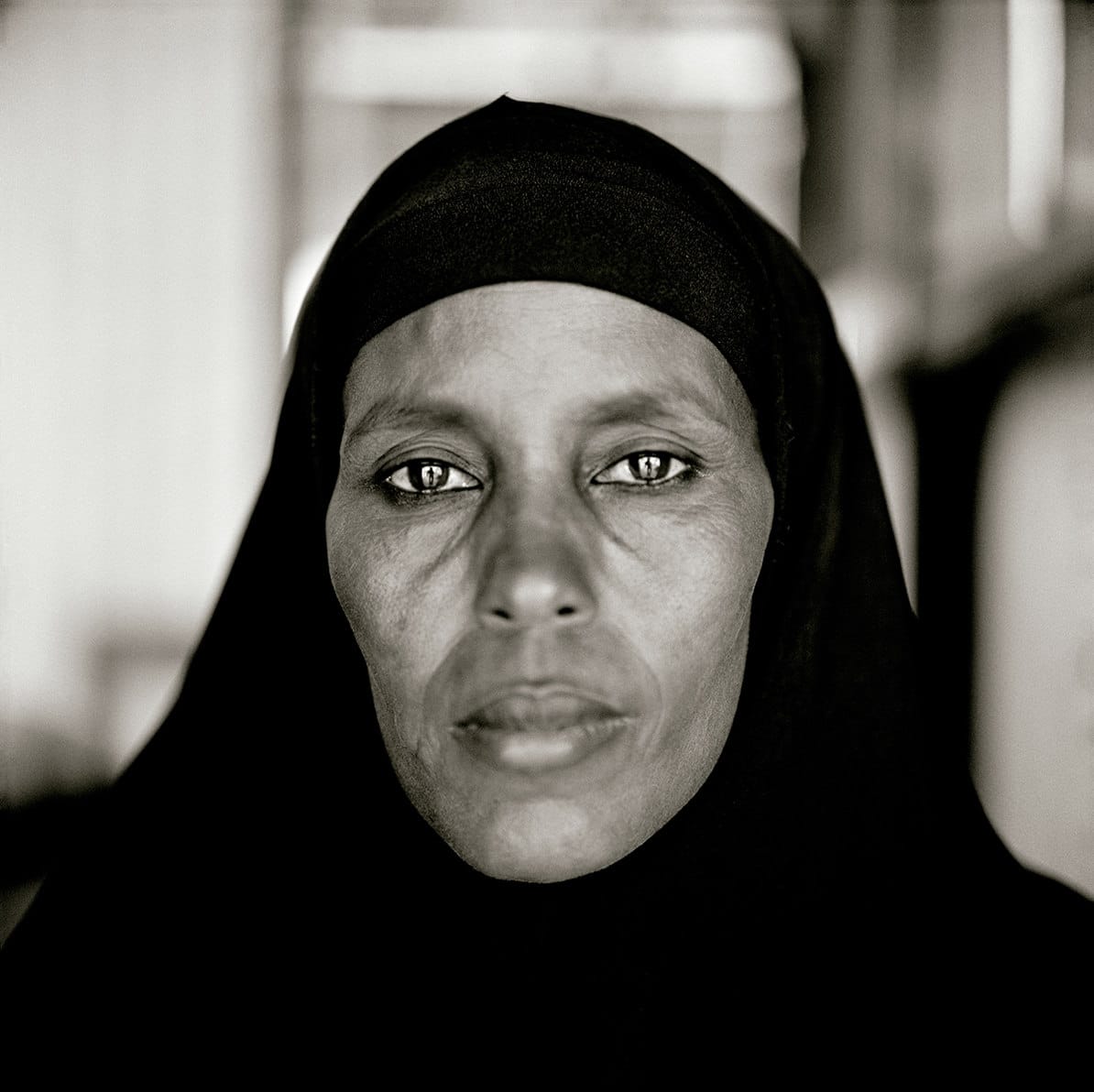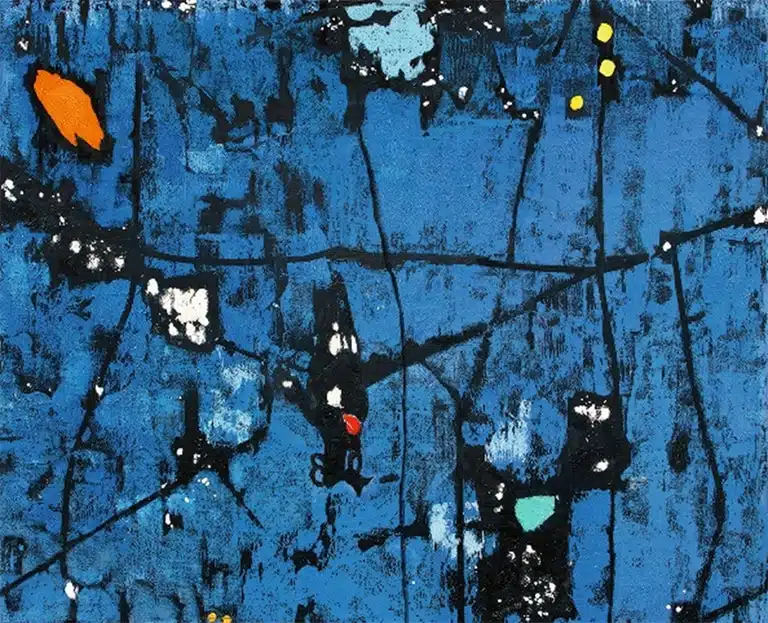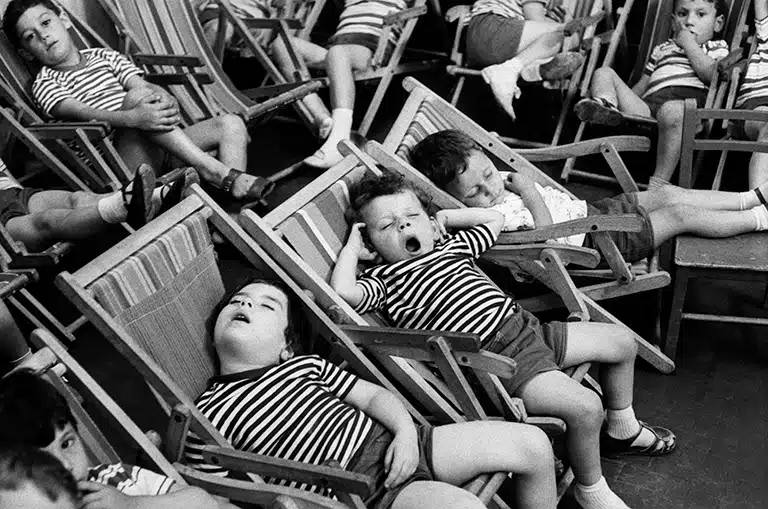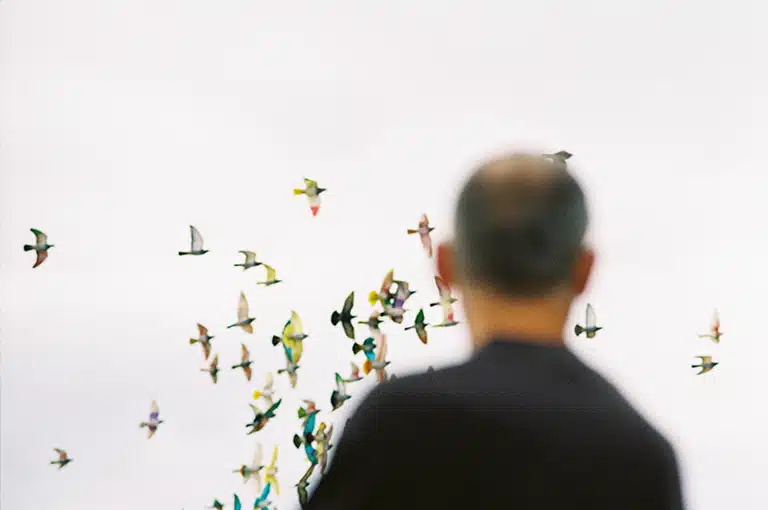Fazal Sheikh
APR.03.2009 ──────── MAY.31.2009

Fazal Sheikh
Abshiro Aden Mohammed, 2002
A Camel for the Son (1992-2000)
© Fazal Sheikh 2009
© COLECCIONES Fundación MAPFRE
The Exhibition
Born in New York in 1965, Fazal Sheikh is a documentary photographer who puts a personal slant on conflicts, narrating them through the faces of his protagonists. In his images, his subjects display tremendous dignity and serenity, and are treated as people rather than a symbol of what they have fallen victim to.
Fazal Sheikh’s objective is to show the situations experienced and endured by the most disadvantaged communities in the Third World. Initially he focused his attention on refugees in different parts of the world; people who have been forced to abandon their homes to escape from war and slaughter. Over time, his field of interest has opened up and in recent years he has become more concerned with the discrimination experienced by Indian women, deprived of all their rights and condemned to endure a difficult life.
Sheikh takes meticulous care over the composition of his images, in which the contrasts between black and white give some spectacular and extremely beautiful results. His portraits have many similarities with the formal perfection of the iconic German photographer August Sander (1876-1964) whose tireless efforts managed to document the human landscape of the Weimar Republic.
This photographer gets personally involved in the situations of the people he portrays, and uses photography to attract the attention of the general public to these issues. However, he does not seek to point a finger at the guilty, he simply aims to bear witness; it is up to the observer to draw their own conclusions.
The exhibition itself is a testimonial of how Fazal Sheikh’s art has developed over the years. His portraits have evolved to extreme close-ups, in which the face occupies virtually the entire area. He seems to have grown in confidence and assurance, which allows him to get much closer to his subjects, to the point that in many cases it is possible to spot the figure of the photographer in their pupils.
Viewers are likely to feel shaken when standing before these glorious photographs that reflect their subjects’ dignity and integrity yet hide the most tragic and violent stories that the artist himself reveals in his commentaries. Over the last few years, Fazal Sheikh’s photographs have attracted the attention of critics and have been showcased in some of the leading North American and European museums.
In 2005 he achieved two of the most important distinctions to be awarded in recognition of a photographer’s work: the MacArthur Fellowship and the Henri Cartier-Bresson International Grand Prix. His work has been exhibited in such prestigious institutions as the Henri Cartier-Bresson Foundation (Paris), the Museum of Contemporary Art (Moscow), the Fotomuseum (Winterthur), the Nederlands Fotomuseums (Rotterdam), the Tate Modern (London), The Art Institute of Chicago, the International Center of Photography (New York) and the Metropolitan Museum of Art (New York), among others.
![Henry Moret L’Attente du retour des pêcheurs [Esperando el regreso de los pescadores], 1894](/media/arte-cultura/exposiciones/paul-durand-ruel-moret-1194x.jpg)



